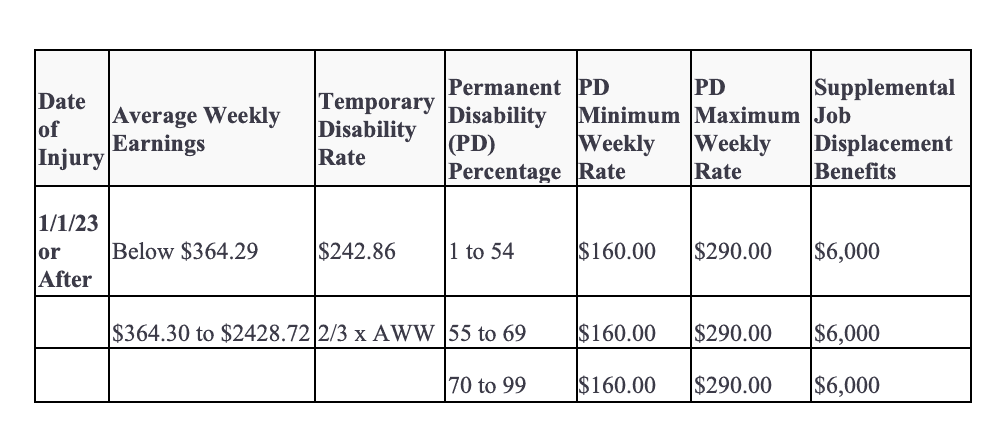All Categories
Featured
For the most part, submitting a workers' comp case in California is actually a three-step process: report the injury documents the real claim with your employer, and file an "application for adjudication of case" with the Workers' Compensation Appeals Board (WCAB). There are time limitations for each of these steps. In some scenarios, you may get away with being late on the very first 2 actions.

Keep reading for the information. For all the actions associated with submitting a workers' comp claim, the target dates for acting start on the day of your injury. That day is rather clear if you were hurt in a work environment mishap, like falling off a ladder. It's a little more challenging if you assume you have what's known as an advancing trauma injury (like a repeated anxiety or stress injury) or an occupational disease (such as lung condition from direct exposure to hazardous chemicals).
If you really did not get the DWC-1 form from your employer, you can download it from the types page of the California Workers' Compensation (DWC) website. Adhere to the instructions on the form for submitting the worker's part. Make sure to list each part of your body that was injured. After you're done, either hand the type to your company personally, or send it by superior or qualified mail (with the U.S.
Generally, the claim will be thought about accepted if the insurer doesn't deny it within 90 days after you have actually submitted the form. If you need to miss out on work due to the fact that of your injury or health problem, the insurer should start paying short-lived impairment advantages within 14 days after it learns concerning the injury and your short-term disability.

(Cal. Labor Code 4650(a), (d) (2025 ).) If your company's insurer has begun paying your medical and temporary disability advantages, you may be lured to believe that all is well. That can be real if your injuries were minor, you recouped swiftly and completely, and you don't have any kind of arguments with the insurance firm about medical therapy or your requirement to miss out on job.
Labor Code 5405 (2025 ).) Courts have discovered that a damaged worker might have longer to submit the application for adjudication of claim if the company or its insurance provider advanced repayments for medical costs while understanding that the treatment might be connected to a prospective workers' comp case. In that instance, the worker has 5 years from the day of injury to submit the applicationthe amount of time made use of when there's "new and additional" handicap, in Cal.
personal injury claims local to CA
Once the insurance firm gives notice that it's rejecting the claim, the worker after that has a year to submit the application (local court expertise). (McDaniel v. Workers' Comp. Appeals Bd., 218 Cal. Application. 3d 1011 (Cal. Ct. Application. 1990).)When you're looking for survivor benefit because you're the reliant of a person who died due to work-related injuries, you have one year from the day of fatality to submit the application for adjudication of case.

You can discover guidelines for submitting the application for adjudication of claim here, together with the web links to obtain duplicates of all of the other records that you need to consist of. The directions also include a web link to make use of if you don't have the name and address of the claims manager for your employer or its insurance policy business.
Otherwise, your legal representative will certainly deal with that. If you didn't submit a worker's comp insurance claim or the application for adjudication of claim promptly, call a California workers' compensation attorney. The regulation in this area is made complex, and there are situations in which you could be excused for missing out on a target date, or the moment duration is extended.
In California, the workers' compensation system is regulated by state regulations and supervised by the Department of Workers' Compensation (DWC). The primary goal of this system is to make certain that injured workers get punctual and reasonable compensation without the requirement for litigation (work comp evaluation). The initial step in submitting a workers' compensation insurance claim is to report your injury to your company
Delaying the report can lead to problems in your claim and might even result in a rejection of benefits. When reporting your injury, provide as much information as feasible regarding the event, consisting of the date, time, and situations of the injury.
This kind is crucial for initiating your workers' compensation claim. While waiting on the type, you can still receive medical therapy, but ensure that you notify the doctor that your injury is occupational. The DWC-1 case form is a critical paper in the workers' compensation process. When you get the kind, fill it out very carefully and thoroughly.
After completing your section of the kind, return it to your employer. Your employer will then finish their section and submit the type to their workers' compensation insurance provider. Upon getting your completed DWC-1 claim form, your company is accountable for submitting it to their workers' compensation insurance coverage carrier. They need to additionally supply you with a copy of the completed form.
Once your company submits the DWC-1 case kind, the workers' compensation insurance policy service provider will assess your claim. They are called for to accredit medical therapy within one working day of getting the kind. The insurance coverage provider will certainly explore the insurance claim to establish its credibility. Throughout this duration, they may call you, your company, and any witnesses to collect more details about the injury.
construction site injuries
This analysis is necessary for identifying the degree of your injury and the proper therapy strategy. The medical professional will certainly evaluate your problem, advise required therapies, and approximate the period of your disability - workplace electrocutions. It is essential to participate in all scheduled clinical visits and adhere to the physician's referrals to guarantee your claim proceeds efficiently
Latest Posts
non-compete enforceability in CA
post-employment restrictions lawyer CA
sue employer for disability discrimination around Cali